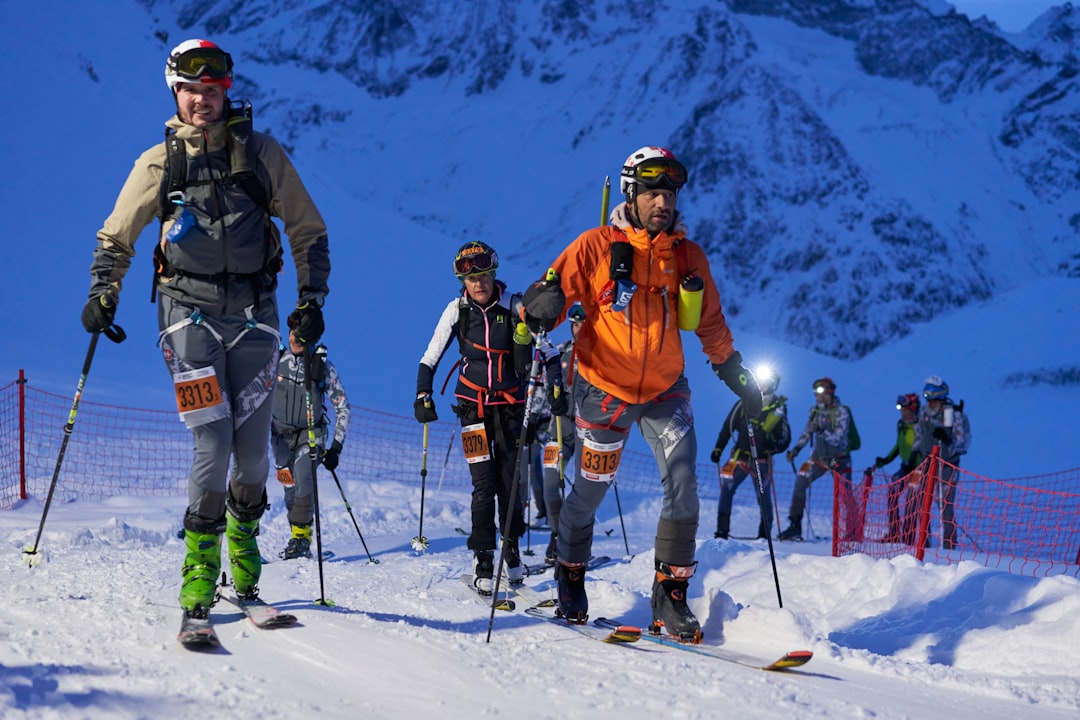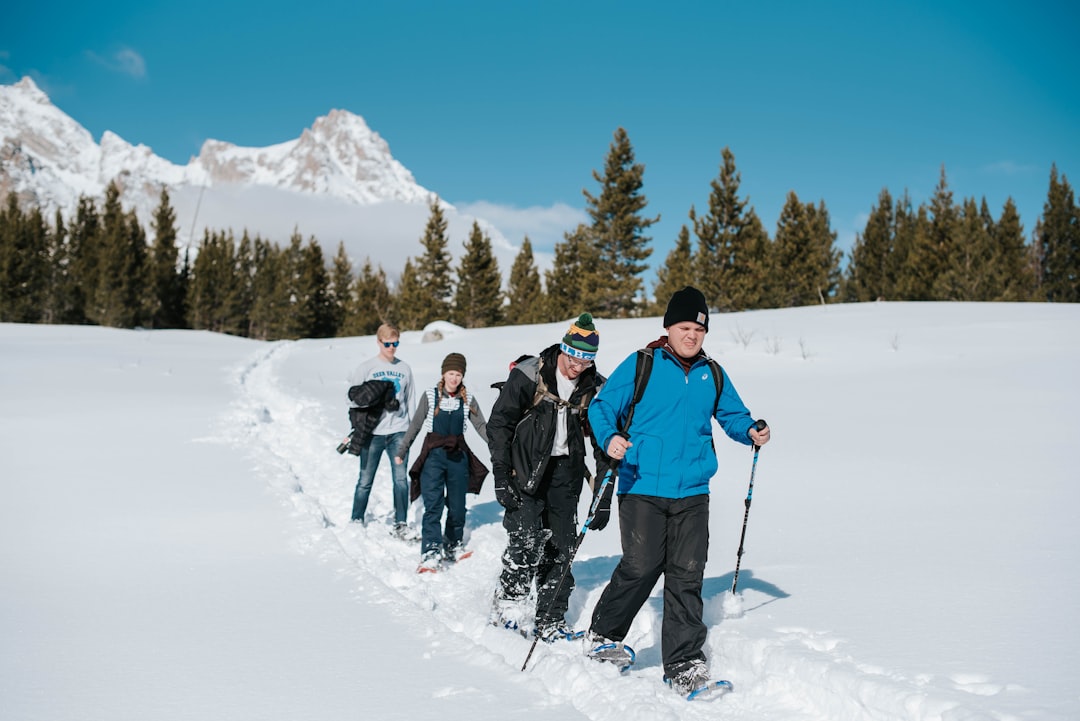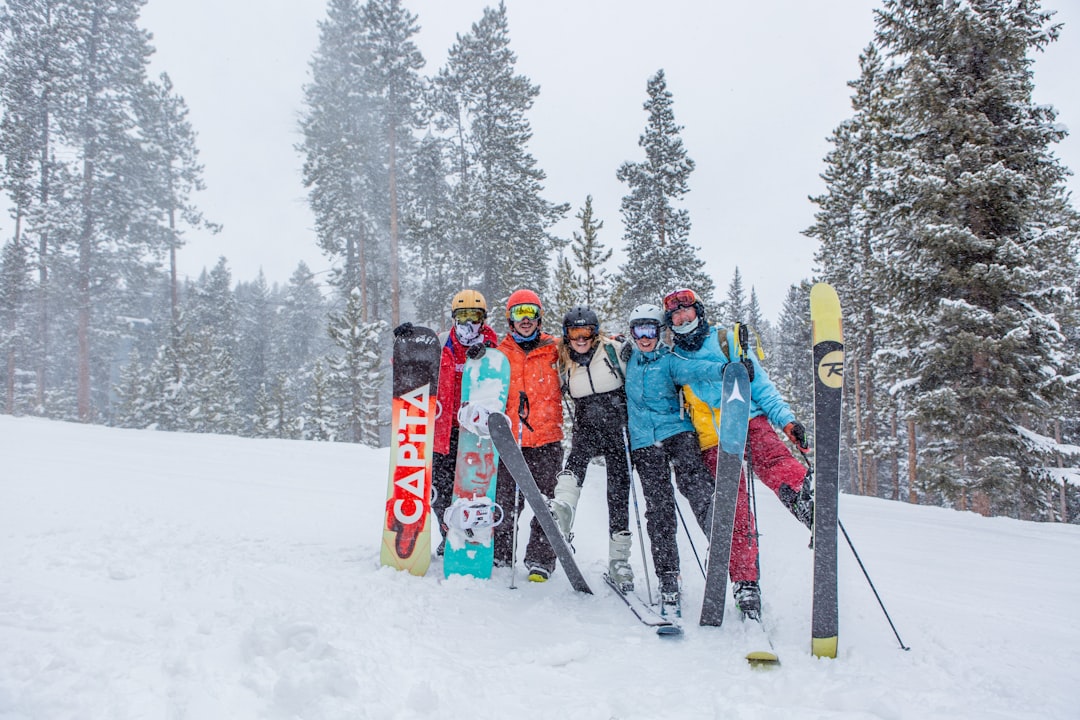

Engage prospects with a scan and streamline customer engagement with FREE QR code marketing tools by Sona – no strings attached!
Create a Free QR CodeFree consultation

No commitment

Engage prospects with a scan and streamline customer engagement with FREE QR code marketing tools by Sona – no strings attached!
Create a Free QR CodeFree consultation

No commitment
In today’s digitally driven world, QR codes have evolved from a novelty to a strategic powerhouse that bridges offline engagement with online action. For ski tour operators, QR codes in ski resorts represent a frictionless and highly efficient way to connect prospective guests with booking portals, detailed trip itineraries, and valuable resources—without requiring an app download or complex navigation. This direct connection is especially crucial as travelers seek easy, contactless ways to discover, research, and reserve their winter adventures.
From lift tickets and rental logistics to reviews of the best backcountry tours, the right QR code deployment streamlines communication and empowers guests to find exactly what they need with a single scan. For operators navigating seasonal peaks, intense competition, missed opportunities to capture high-value prospects, and evolving guest expectations, QR codes help drive more conversions from physical brochures, signage, and promotional materials. Every touchpoint becomes a gateway to deeper engagement and more complete data capture.
This article explores how ski tour operators can leverage QR codes to deliver seamless guest experiences, speed up conversions, and gain data-driven insights that solve for gaps such as unknown visitors and incomplete CRM records. You will find practical strategies, workflows, and creative ideas for integrating QR codes into every facet of your marketing and sales journey, so your team can act on guest intent the moment it appears, informed by intent data.

QR codes bridge the gap between physical touchpoints and digital outcomes, making it easier for ski tour operators to boost bookings, promote tour packages, and provide information instantly. Many operators, however, still rely on analog processes like paper brochures and manual sign-up sheets that mask intent and create unnecessary friction. When a guest picks up a brochure at a rental counter, for example, the action often goes untracked. When a skier reads an avalanche bulletin on a printed sign, you do not know whether they are interested in booking a guide for tomorrow. QR codes change that by turning every physical impression into an actionable, trackable moment.
The most effective programs start by mapping the buyer journey across your lodge, rental shop, shuttle, and on-mountain digital signage, then placing QR codes at deliberate points of high intent. Each scan moves a guest to the next step, whether it is selecting dates, reserving gear, completing a waiver, or checking weather and avalanche conditions. Each scan also generates data that can feed your CRM and ad platforms for smarter follow-ups and retargeting.
Ski tour operators can modernize printed maps, streamline equipment rentals, and enable instant review submissions, turning every in-person interaction into a measurable digital opportunity. In an environment where missing just one high-intent guest can mean lost revenue, QR codes help ensure that interest is recognized, recorded, and nurtured.

Ski tour operators face a series of practical challenges: high traffic in cold environments, frequent last-minute changes, and many guest touchpoints that occur offline. QR codes address these realities by making every physical touchpoint clickable and measurable, giving your team the agility to adapt and the data to improve results.
When a QR code is added to a trail map, a rental receipt, or a ski pass, you gain a connection to the digital journey that follows. That connection helps you prove which marketing assets work, speed up bookings during peak hours, and deliver dynamic content that keeps guests informed and engaged. It also reduces the need for staff to answer the same questions repeatedly by routing guests to self-serve resources.
By integrating QR codes into the materials you already print and display, you convert passive moments into active, trackable pathways. Guests get clarity and convenience. Your team gets data, speed, and better attribution insights that directly support revenue growth through better offline attribution.
Choosing the right QR format matters. Different moments require different actions, and the format should match the desired outcome. For ski tour operators, formats that support rapid booking, contact info, and form capture are typically most useful. Dynamic codes are especially valuable since they allow updates without reprints and offer analytics that illuminate performance. See Sona QR use cases for more examples.
Before deciding, map each guest interaction to a next best step. If a skier is at the rental counter, the most helpful next step might be a gear reservation form, not a general homepage. If a group is boarding a shuttle, the step could be day-of safety updates and a guide contact card.
Dynamic codes should be the default for anything that may change or that benefits from analytics. Reserve static codes for evergreen assets like a simple Wi-Fi join or a corporate contact page.

Growth is often hiding in plain sight. The key is to place QR codes where intent naturally spikes and where your team struggles to identify or capture that intent. That means prioritizing moments along the guest path that combine high attention, clear needs, and reachable surfaces.
Think beyond typical displays. Terrain parks, bus shelters, gondola cabins, lift lines, and boot-fitting benches all offer micro-moments that can route guests to bookable experiences and helpful content. These are places where guests have time to scan and a reason to act.
By aligning QR strategy with the physical guest journey, you surface intent data from every stage and recapture leads that would otherwise remain anonymous. Over time, hot spots become obvious in your analytics, enabling targeted investments that compound conversion gains.

The most effective deployments connect a specific surface with a concrete action and outcome. For ski tour operators, three categories consistently produce results: instant booking access, safety and operations updates, and rentals or logistics. Learn more about QR in tourism.
Effective use cases share three traits. They meet a timely need, they reduce friction with a one-scan solution, and they feed a system that can act on the resulting data through alerts, automation, or retargeting.
Each use case leaves a digital breadcrumb, letting operators connect offline actions to online outcomes and identify bottlenecks. Combined, they form a system that informs staffing, inventory planning, and marketing allocation.
Every scan reveals something about the scanner: where they were, what message they saw, and what they wanted in that moment. When you deploy unique QR codes across your touchpoints, you can segment audiences by behavior, timing, and location without asking the guest to fill out a lengthy form.
A segmented approach pays dividends in the off-season and shoulder weeks. You can retarget day-pass holders with multi-day packages, nudge clinic participants toward advanced tours, and invite shuttle riders to book private transfers. The intent signal embedded in the QR scan lets you tailor the message to the moment; see the Sona retargeting playbook.
With a robust tagging strategy, your remarketing moves from generic to relevant. Scans become the proof of interest that powers targeted offers, event invitations, and personalized itineraries.
QR codes act as connectors across offline and digital campaigns, transforming static assets into interactive experiences. When coordinated across channels, they create a continuous path from discovery to booking while generating data for attribution and optimization.
The key is consistency. Use aligned visuals, benefit-led CTAs, and destination pages designed for mobile. Then centralize performance monitoring so each code’s impact is visible across campaigns and seasons.
Centralizing the management of codes, destinations, and analytics ensures that every scan becomes a measurable step in your broader marketing strategy. Over time, you will see which channels and placements consistently contribute to bookings and guest satisfaction.
Identify a specific friction point and a clear objective. For many operators, this might be a high volume of brochure pickups without tracked conversions or long lines at rental counters due to paper-based waivers. Define the outcome you want, such as increasing peak-season bookings by 15 percent, doubling survey response rates, or reducing average check-in time by five minutes.
Tie the use case to a tangible business impact. If your goal is to sell more first-light tours, place QR codes on lift-line banners and in shuttle queues, and route scanners to a landing page with date selection and a limited-time incentive. If your objective is better feedback, attach codes to gear with a post-tour survey that populates your CRM.
Decide whether the code should be static or dynamic. Use dynamic codes for any campaign that needs analytics, retargeting, or the flexibility to change destinations without reprinting. Static codes are acceptable for evergreen content like Wi-Fi access or a permanent contact page. See the Sona QR product overview for capabilities that support scan tracking, UTMs, and CRM sync.
Match format to action. Forms are ideal for waivers, sizing details, and reservations. vCards are essential for guide contacts and emergency info. Web links are best for booking pages and dynamic content like avalanche bulletins.
Design for visibility and clarity. Use high-contrast colors, a protective margin around the code, and a clear CTA positioned near the code. Add your logo within the code if supported by your generator, but do not compromise scannability. Ensure your landing pages are mobile optimized and fast.
Test thoroughly in real-world conditions. Snow glare, wet surfaces, and cold fingers can affect scanning behavior. Test multiple device types, angles, and distances. Consider laminated or metal plates for codes placed outdoors or on gear, and use UV-resistant inks for sun-exposed locations.
Start creating QR codes for free.
Prioritize placements where guests have time to scan and a reason to act. Lift lines, rental counters, shuttle stops, and lodge tables are natural fits. In-room hotel materials and partner retail stores can extend reach beyond the mountain.
Stagger deployments to isolate performance by location and message. Use unique codes per placement so you can compare scan rates and conversion behavior, then double down on winners.
Treat scans as the first step in a measurable journey. Track scans by time, location, device, and code. Layer in UTMs for destination pages to capture source data in web analytics. Connect scan events to your CRM to enrich contact records and trigger follow-ups.
Analyze conversion flows. Which codes drive bookings, which drive form completions, and where do users drop off? A/B test landing page copy, incentives, and CTA wording. Iterate monthly during high season and quarterly in the off-season.
Proving ROI and understanding guest behavior are perennial challenges for ski tour operators. Traditional analytics struggle when so much engagement starts offline. QR strategies solve this by capturing the first digital moment and tying it to outcomes, so you can show how physical assets contribute to bookings and retention.
The goal is not just to count scans, but to connect each scan to a pipeline of actions that lead to revenue. When scans are uniquely tagged and destinations carry UTM parameters, you can track performance by asset, message, and location and support multi-touch models. When scan data flows into your CRM, you can follow up automatically and attribute wins to the touchpoints that created them.
When you unify scan and conversion data, the picture of guest behavior sharpens. You will allocate resources more intelligently, prioritize high-intent leads, and avoid spending on channels that are not contributing to bookings.
Many operators experiment with QR codes but stop at the first scan. The real gains come when you connect scans to follow-ups, segment audiences, and automate next steps. Pair smart placements with data discipline and you will see a compounding effect on conversion and guest satisfaction.
Focus on clarity, speed, and relevance. The most successful deployments tell guests exactly what they will get, deliver that value quickly on a mobile-optimized page, and tailor the follow-up to the scanner’s context.
By combining clear CTAs, precise tracking, and timely automation, your QR program becomes more than a set of links. It becomes a growth engine that turns offline attention into measurable, repeatable results.

Operators around the world are finding creative ways to apply QR codes to persistent challenges like anonymous interest, long lines, and limited attribution. These examples show how small adjustments to existing assets can move the needle on bookings and satisfaction.
Consider how similar ideas could work with your terrain, guest profile, and brand voice. The most successful campaigns feel native to the environment and provide real value at the moment of need.
These examples demonstrate that QR innovation does more than patch marketing gaps. It shapes a more connected, responsive guest journey that compounds value over time.
Most underperforming QR campaigns miss the mark on relevance, scannability, or follow-up. Mountain environments add complexity, and small oversights can break the experience. A few best practices can help you avoid common pitfalls and maximize ROI.
Begin with the guest’s perspective. If the value is unclear or the code is hard to scan, even the best analytics setup will not matter. Match the destination to the context and always test in real conditions before going live.
With careful planning and attention to detail, QR codes evolve from a novelty into a dependable driver of bookings, safety compliance, and guest satisfaction.
QR codes have become more than just convenient shortcuts for ski tour operators; they unlock instant guest engagement, bridge the offline to online gap, and provide actionable data for growth. Whether driving bookings for luxury ski tour packages, streamlining guest services, or enabling dynamic content delivery in challenging environments, QR codes empower operators to elevate every interaction into a conversion opportunity and reduce the risk of missed high-value prospects.
By adopting a strategic, data-driven approach that closes visibility gaps and integrates CRM enrichment, ski tour operators can capture demand at the moment of interest and create a seamless, measurable journey across all guest touchpoints. Embracing QR technology means transforming every physical asset, from trail maps to tickets, into a digital entry point. This helps your business stay ahead in a competitive, rapidly evolving landscape.
QR codes have transformed ski tour operators from traditional outreach into dynamic, measurable growth engines. Whether it’s attracting new adventurers, enhancing on-mountain experiences, or streamlining bookings, QR codes replace cumbersome processes with instant, mobile-friendly actions that capture real-time data to turn every interaction into a high-value conversion opportunity. Imagine knowing exactly which brochures, signage, or gear tags drive bookings—and being able to optimize those campaigns instantly.
With Sona QR, you can create dynamic, trackable QR codes in seconds, update your promotions without reprinting materials, and link every scan directly to revenue. No more guessing which marketing efforts pay off—just smarter, more profitable ski tour campaigns that elevate your business on and off the slopes. Start for free with Sona QR today and turn every scan into a new booking, an upsell, or a loyal customer.
Ski tour operators typically offer guided tours, avalanche clinics, equipment rentals, shuttle coordination, safety updates, and upsell opportunities like night tours and photo packages.
You can scan QR codes placed on brochures, lift-line banners, or lodge signage that direct you to mobile booking pages where you can select dates, reserve gear, and complete waivers.
Operators use QR codes on ski passes and trailhead signs to provide real-time safety updates, avalanche bulletins, route status, and emergency contact information.
The article does not specify exact charges, but QR codes help operators promote dynamic pricing and tour availability, which can be accessed via mobile booking portals.
QR codes are commonly placed at lift lines, rental counters, shuttle stops, lesson huts, trail maps, shuttle cards, and partner touchpoints like hotel keycards.
QR codes reduce friction by enabling quick, app-free access to booking forms, waivers, equipment reservations, and safety information, streamlining the guest journey.
Operators use dynamic QR codes for web links, vCards, forms, SMS or email triggers, Wi-Fi access, and app downloads to provide flexible, trackable guest interactions.
Scan data feeds into CRM systems and ad platforms to track guest behavior, enable retargeting, automate follow-ups, and optimize marketing and operations.
QR codes help overcome offline-to-online gaps, reduce manual data entry, capture guest intent in cold and fast-paced environments, and allow dynamic content updates.
Operators should place QR codes in high-intent, accessible locations with clear CTAs, use weatherproof and glare-resistant materials, and ensure mobile-optimized landing pages.
Use Sona QR's trackable codes to improve customer acquisition and engagement today.
Create Your FREE Trackable QR Code in SecondsJoin results-focused teams combining Sona Platform automation with advanced Google Ads strategies to scale lead generation

Connect your existing CRM

Free Account Enrichment

No setup fees
No commitment required

Free consultation

Get a custom Google Ads roadmap for your business






Launch campaigns that generate qualified leads in 30 days or less.
